Why Does Jordan Misbehave?: Understanding Your Students’ Behavior Antecedents
February 14, 2017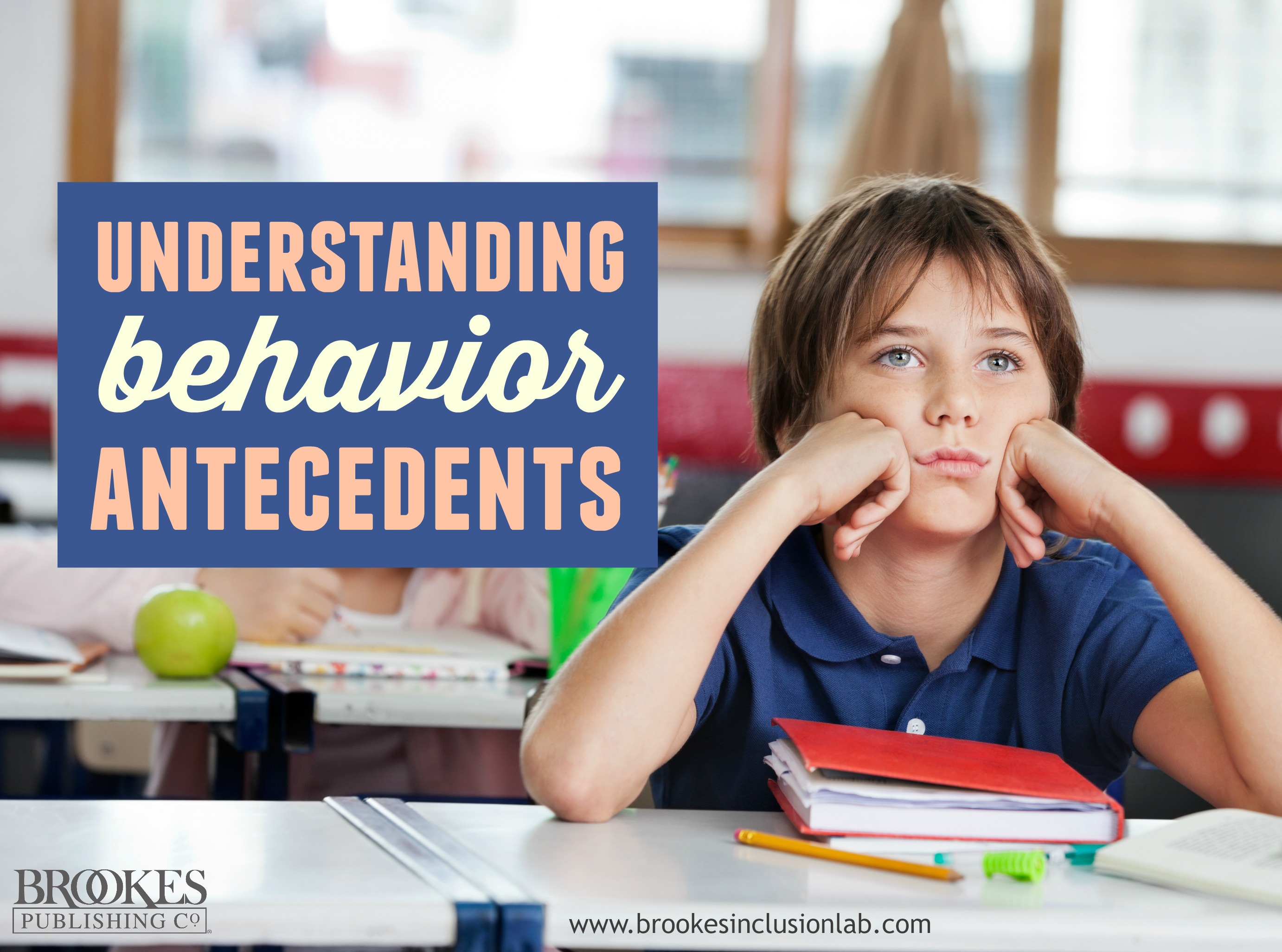
Today we’re pleased to welcome a special guest to the blog: Beverley Johns, author of the Brookes book Your Classroom Guide to Special Education Law. While her book is broadly focused on helping teachers provide appropriate, legally compliant special education services—and avoid accidentally breaking the law—Beverley is here to talk about one specific aspect of education: student behavior, and the often-elusive “whys” behind it.
In this post, which builds on her book’s chapter on behavioral interventions, Beverley explores the antecedents of inappropriate classroom behavior—and challenges teachers to assess their own behaviors as an important first step. Read on for some takeaways you can apply in your own classroom to help bring about positive change.
***
“I just can’t understand why Juan won’t stay in his seat.”
“I don’t know why Kiara won’t do her assignments.”
“Why is Bill always bullying the other students?”
These questions and many others come up frequently as we try to decipher why students behave the way they do. Understanding behavior can be complex, and there isn’t always an easy way to figure out why students behave the way they do.
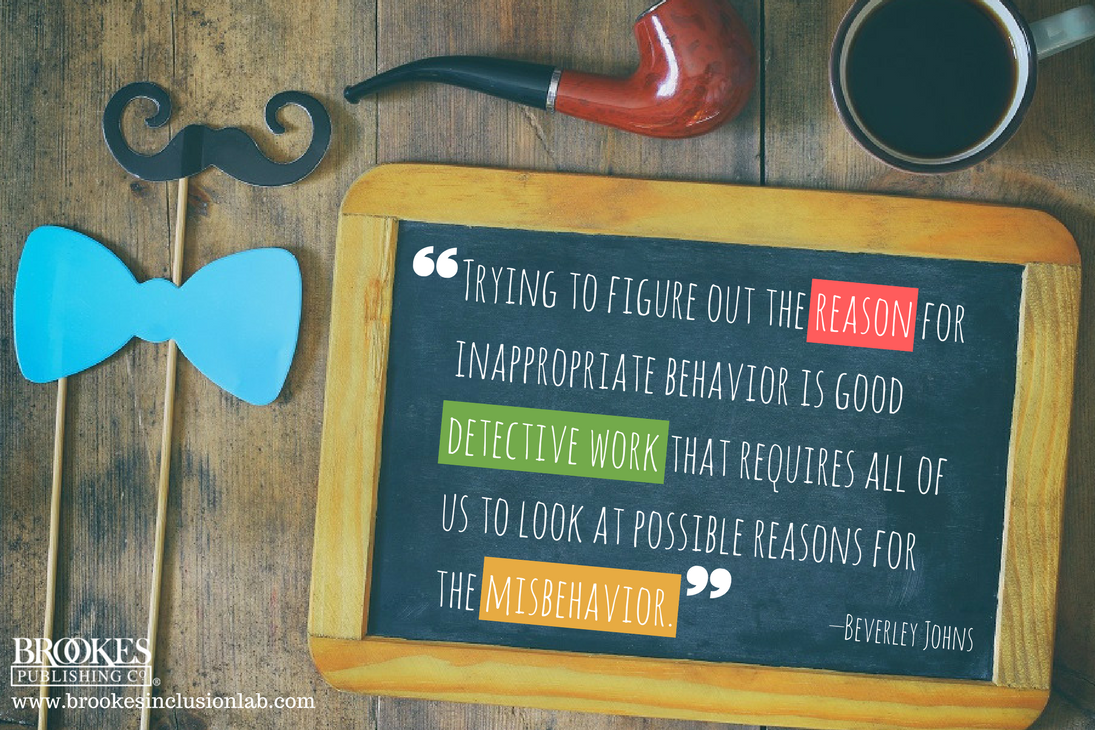
Trying to figure out the reason for inappropriate behavior is good detective work that requires all of us to look at possible reasons for the misbehavior. If we don’t do our detective fact-finding, we can’t determine appropriate positive behavior interventions for students. Just as we do when students are having academic problems, we have to conduct an academic assessment.
When students are having behavior problems, we have to conduct a functional behavioral assessment. One of the most difficult parts of functional behavioral assessment is determining the antecedents of the inappropriate behavior. Antecedents are those events that lead up to misbehavior. What happens before a behavior occurs? In some instances, the antecedent of students’ misbehavior can be our interactions with them.
The First Step in Understanding Student Behavior: Our Interactions with Students
We often assume that students are engaging in a certain behavior because they want attention or they’re just trying to irritate us or the other students. While that may be true, it may not be. We may be too close to a situation to see the patterns of behavior the student may be exhibiting. At times, we are the reason for the inappropriate behavior. If we change our own behavior, we can prevent problems.
Picture this situation. Ginger, a fourth grader, comes in each morning and her teacher requests that she start writing in her journal. Ginger starts writing in her journal. The teacher is busy helping other students and ignores Ginger’s compliance and engagement in the journal writing. Ginger would like some attention, so she starts acting up. She starts tipping her chair backwards and taps her pencil on the desk. The teacher continues to ignore her. Ginger decides to “step up” her behavior: she starts yelling, gets out of her seat, and knocks over another student’s journal. The teacher then goes over and corrects her. In this case, Ginger wanted attention and demanded it through negative behavior. The teacher blamed Ginger, but who was really to blame? Could the teacher have better met Ginger’s need for attention by giving her praise when she started to write in the journal?
When I have had problems with students, the first place I have looked is within myself. This isn’t easy—it is easier to blame the student. However, if I am a reflective teacher who understands the important role I play in the behavior of my students, I have to ask myself this question: Are my own interactions with the student contributing to his or her inappropriate behavior?
As we assess our student’s problematic behaviors, we need to ask ourselves these 10 questions so that we can better monitor our own behavior:
- Are we giving attention to students for negative behaviors rather than positive behaviors?
- Are we engaging in power struggles with our students? We may find ourselves defending our position with students rather than explaining to the student what we expect from him or her.
- Are we becoming agitated with students when they engage in a certain behavior and they know what gets to us? Students may call us names like “Fatty” or “Thunder Thighs.” They notice that we are bothered when they call us those names, so they keep doing it. Instead we need to focus on the behavior we want the student to exhibit.
- Are we remaining calm when the student is engaging in inappropriate behavior? If we start raising our voices, students become more agitated and misbehave more.
- Are we engaging in arguments with students? The student may say, “Why do you want me to do this? You never make Justin do that assignment.” If we’re not careful, we begin arguing with the student that we do make Justin do the assignments.
- Are we being realistic in our academic expectations of our students? If a student struggles with third-grade reading comprehension, for example, are we expecting the student to answer questions about a story written at a fourth-grade level?
- Are we being realistic in our behavioral expectations of our students? We may expect the student to sit and complete an independent task for twenty minutes, when the student’s attention span is only eight minutes.
- Have we made our expectations for the student clear? We often expect students to follow rules that we haven’t told them about or that they may have forgotten.
- Are we being consistent with the student? Perhaps we don’t feel good when we come in on Monday morning and we just let a lot of behaviors slide. Then when the student engages in those behaviors on Tuesday or Wednesday, we become upset.
- Are our biases interfering with our interactions with students? We all have biases, and we need to look at whether those are affecting our interactions with a student. For example, perhaps the student has had head lice and we are afraid of getting lice, so we avoid interactions with that student. Or maybe we’ve had a negative interaction with the student’s parent, so we’re subtly biased against the student. It’s wise to identify our own biases so we can monitor our own behavior and determine whether we are being fair to the student.
Our first step in the detective work of functional behavioral assessment is to look at our own behavior. We ourselves could be the antecedent of inappropriate behavior. If we can recognize that and alter our responses to a student, we are taking the first step toward achieving positive behavioral change—both in ourselves and in our students.
***
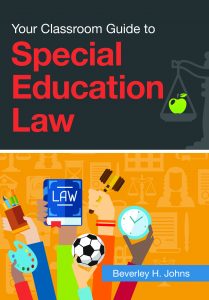 Thanks to Beverley Johns for being here today and sharing her tips on understanding student behavior—and creating an environment more conducive to positive behavior and learning. To learn more about implementing appropriate behavioral interventions (and ensuring that all your practices adhere to the law), check out her book, Your Classroom Guide to Special Education Law.
Thanks to Beverley Johns for being here today and sharing her tips on understanding student behavior—and creating an environment more conducive to positive behavior and learning. To learn more about implementing appropriate behavioral interventions (and ensuring that all your practices adhere to the law), check out her book, Your Classroom Guide to Special Education Law.

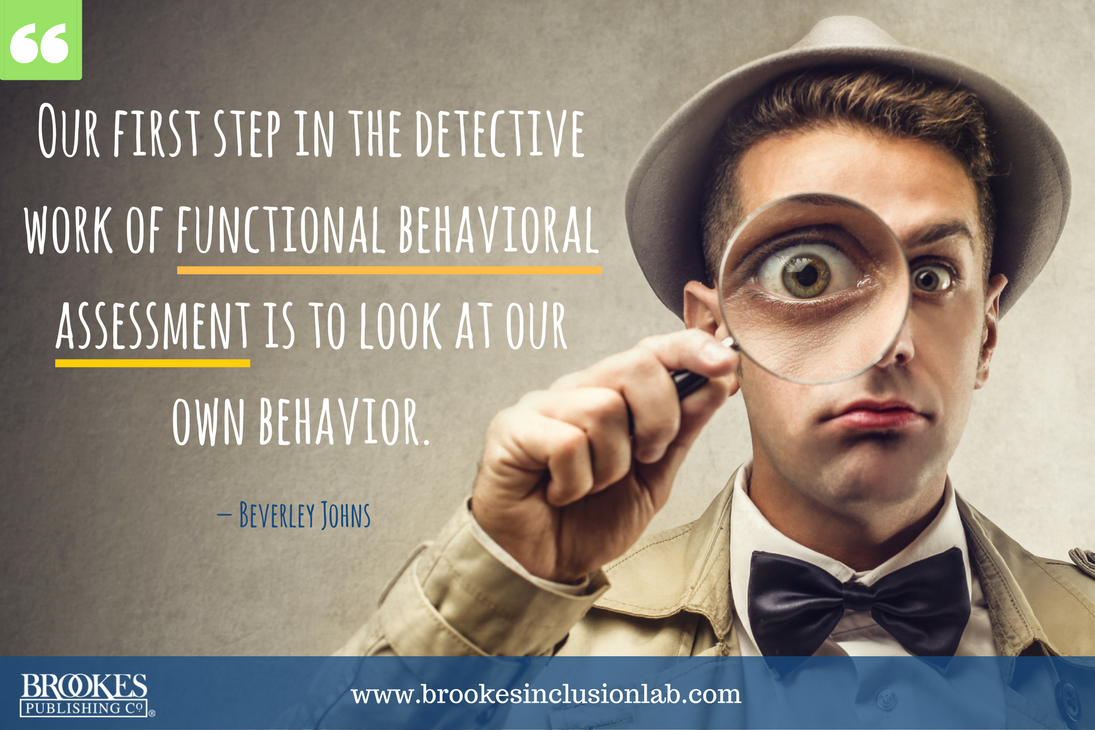
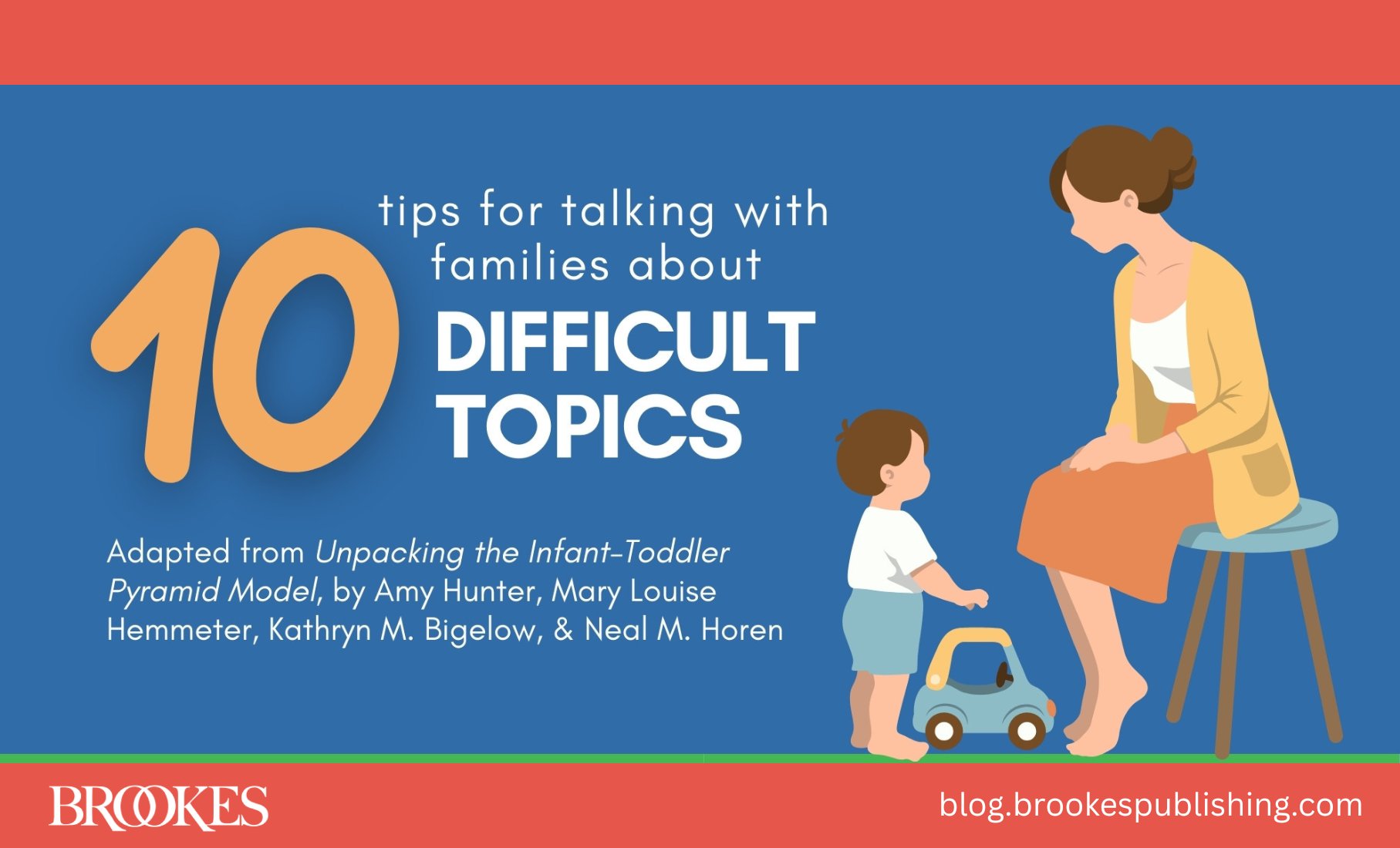

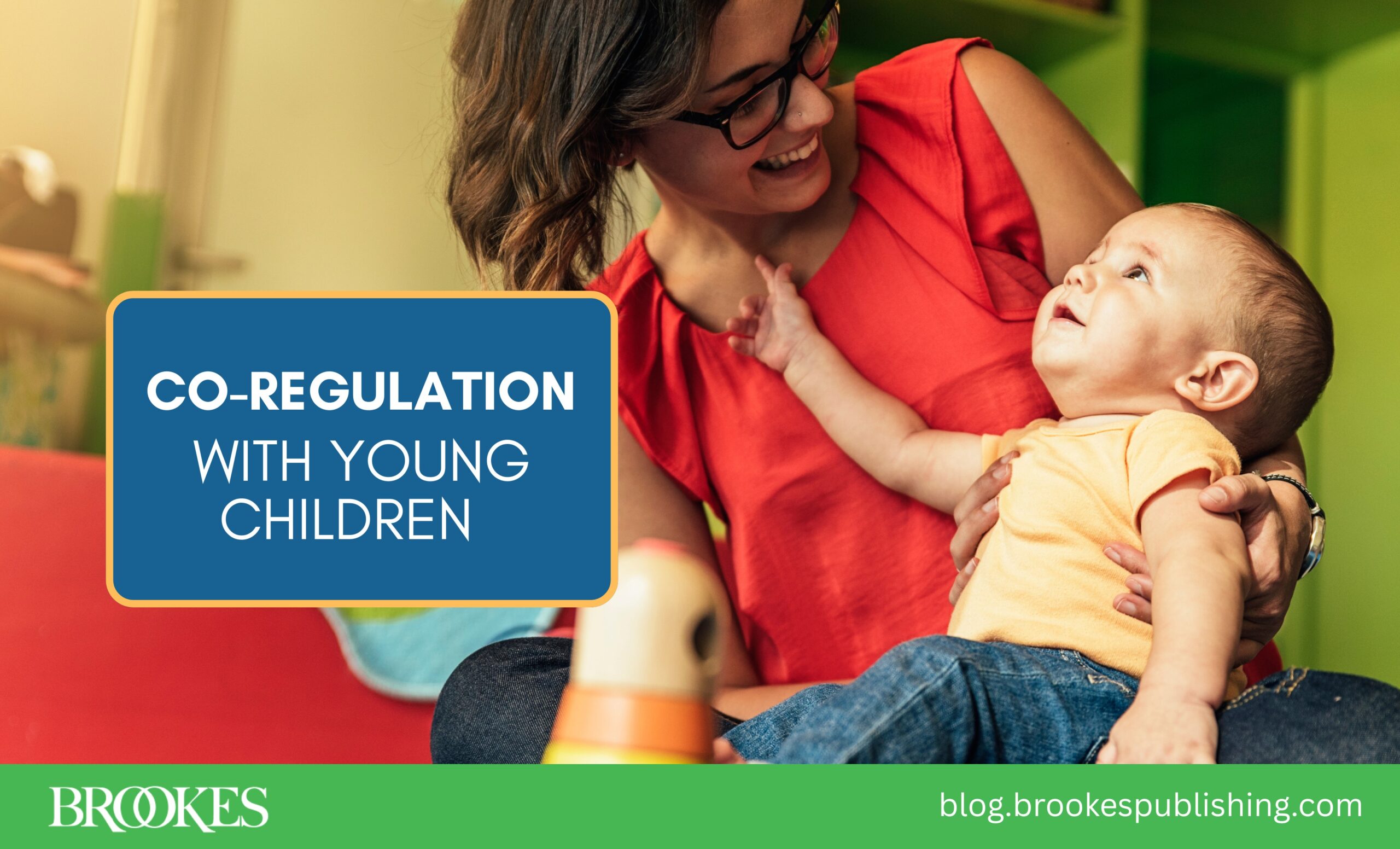
Write a Comment
Your email address will not be published. Required fields are marked *
comments
Chris says
Can a school use a numeber system soley and no narrative to inform parents of behaviors. Just wondered how we are suppose to talk with our child about behaviors that occurs at school when we hear he had a 2 today.
jlillis says
Hi Chris,
Thanks for commenting. I'm the editor of this blog and as a parent, I empathize with your frustration. You're right, it's very difficult to get to the bottom of your child's behaviors and help him work on positive behavior at home when detailed information isn't being shared. I would definitely recommend following up with his teacher, sharing your frustrations with the number system, and asking what you can do at home to support your child's behavior.
Post a Comment